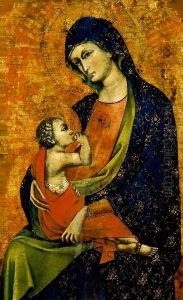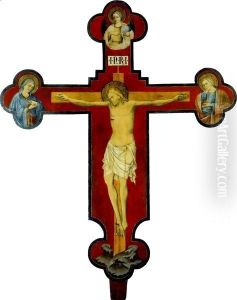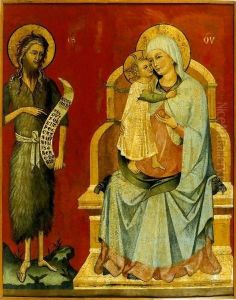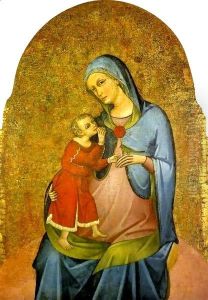Menegello di Giovanni de Canali Paintings
Menegello di Giovanni de Canali, often simply referred to as Meneghino del fu Giovanni de Canali, was an Italian painter from the 14th century, active during the Trecento period, which is known as the Italian pre-Renaissance. Details about Meneghino's life are scarce, as is common with many artists from this time, but he is noted for his contributions to the development of Paduan art. His work is representative of the Gothic style that was prevalent in Italy before the Renaissance took full hold.
Meneghino's exact birth year is unknown, but it is estimated to be around 1320. He was presumably born in Canale, which was part of the commune of Padua, and his surname 'de Canali' indicates his family's origin. Not much is known about his training or early career, but he is believed to have been active during the mid-14th century, with a career that spanned into the latter part of the century.
His art mainly consisted of religious works, as was typical for the period, and he is known to have painted frescoes and altarpieces. Meneghino's style was characterized by the use of vivid colors, intricate details, and traditional Gothic elements such as elongated figures and gold backgrounds. These stylistic traits aligned him with other artists of the Gothic tradition in Italy, although the influence of the emerging Renaissance style began to be felt during his lifetime.
Documentation from 1379 suggests that Meneghino was still alive at that time. However, the exact date of his death is unknown, and there is little record of his activities after this date. The lack of extensive historical records makes it difficult to trace the full impact of his work. Still, Meneghino di Giovanni de Canali remains a figure of interest for those studying the artistic transitions of 14th century Italy and the interplay between the Gothic and early Renaissance styles.



